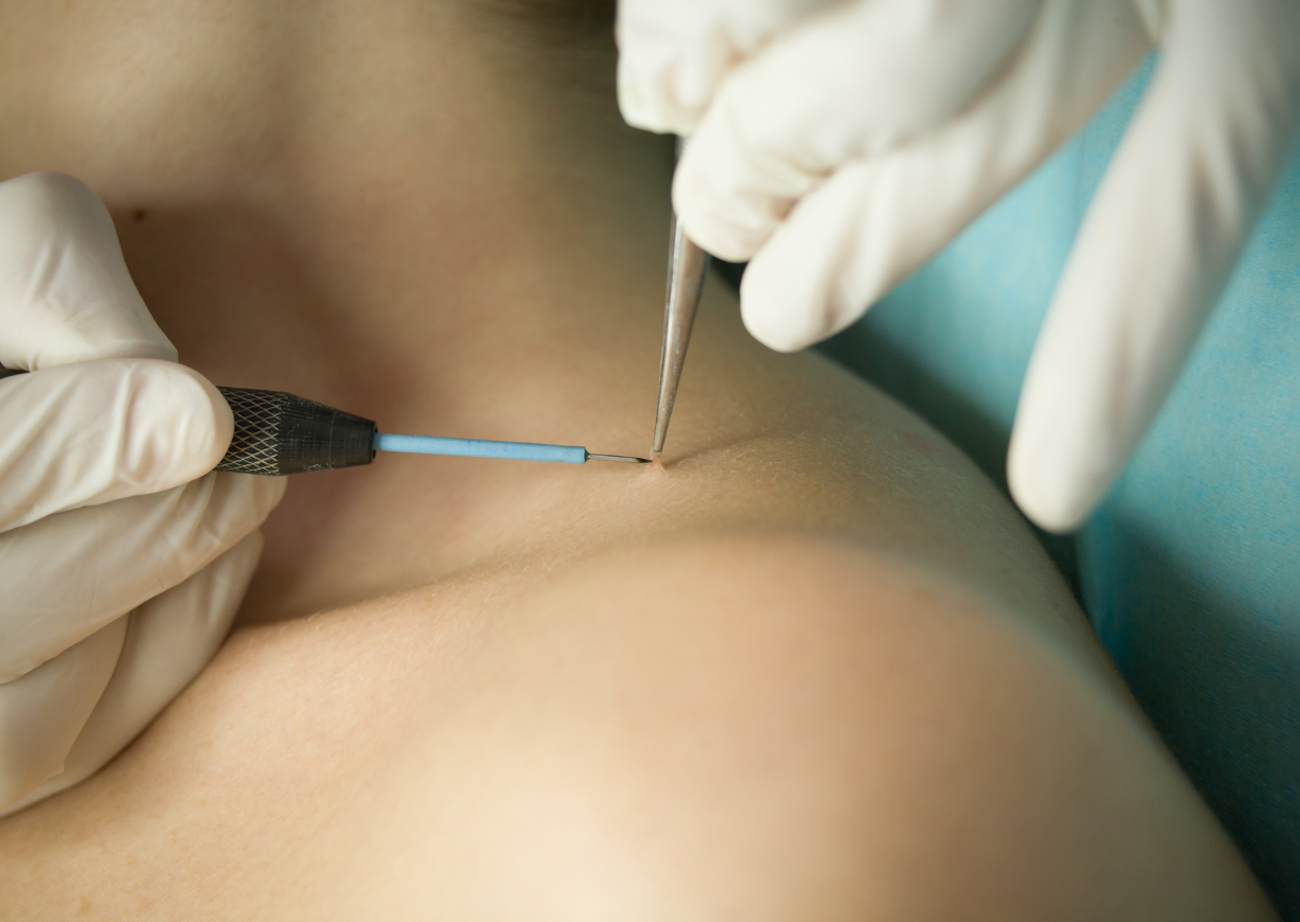Skin Tags: All you need to know

For relatively tiny and harmless things, skin tags can cause a disproportionate amount of irritation to those of us that experience them.
If you are considering having them removed, whether for comfort or cosmetic reasons, it can help give your skin a smoother, more flawless appearance. Ultimately, the choice is yours but if you do opt for skin tag removal, you should seek professional assistance. Below, we have answered some of the questions our expert dermatologists are asked about skin tags, as well as their recommended course of action for dealing with skin tags.
Where do skin tags grow?
They tend to be most common around folds of skin, such as on the neck, armpits, groin, under breasts and buttocks and on the eyelids. These areas tend to experience higher levels of friction, which may be what causes skin tags to form but also pose a risk of damage and infection. Try to avoid wearing clothing or jewellery that rubs against skin tags.
Why do you get skin tags?
It’s perfectly natural to get skin tags, and there are several factors that are thought to contribute to their appearance on your skin. Some people do seem to have a higher genetic propensity for developing skin tags, and they’re more common in those who are overweight or have type 2 diabetes. They can become develop more frequently with age, after contracting a virus or as a result of extreme skin stretching such as during pregnancy.
What do skin tags look like?
These growths of excess skin are usually small and the same colour as the surrounding skin but can also be darker due to hyperpigmentation. They should be soft and hang off the skin, unlike warts which tend to be flat. They are sometimes described as looking like a grain of rice or a mushroom, as they have a narrow base connecting them to your body.

Are skin tags dangerous?
No, skin tags are generally not dangerous. They may bleed if snagged on clothing or jewellery, and there is a chance that this could become infected. If you notice a new skin tag, it’s a good idea to visit a dermatologist, who will be able to conclusively differentiate them from other types of skin growth that may be cancerous. You should also seek out a dermatologist if a skin tag changes shape or colour.
Can you cut off a skin tag?
We do not recommend at-home skin tag removal because of the chance of infection and scarring. ‘Natural’ home remedies such as apple cider vinegar are not proven methods and may cause irritation, especially in those with sensitive skin types. At EF Medispa, our expert dermatologists will be able to quickly and safely remove any skin tags that are bothering you.
- Excision or surgical removal – using a scalpel to cut away the skin tag, which may cause minor bleeding and, less commonly, may require stitching
- Cryotherapy – using a ‘cryogen’ such as liquid nitrogen to freeze the skin tag, encouraging it to fall off. You won’t usually bleed, but may develop a small blister
Finally, do skin tags grow back?
These treatments are permanent, although there is a chance that you may develop another skin tag in the same area in future. If you are worried about pain, we will numb the area with a local anaesthetic. Read more about skin tag removal here. If you would like to proceed with one of our professional skin tag removal treatments, book a consultation today.


